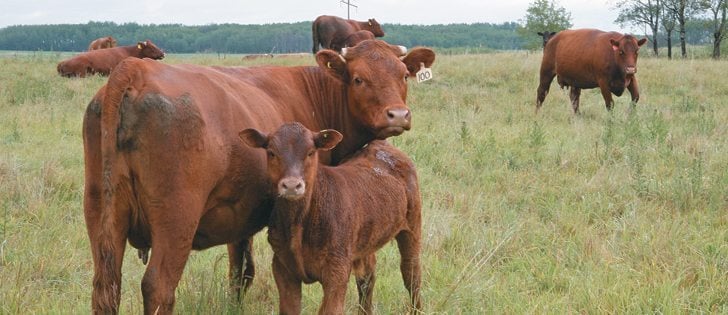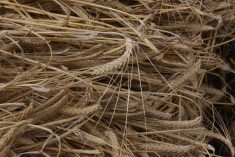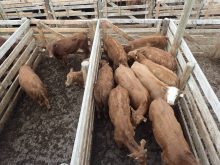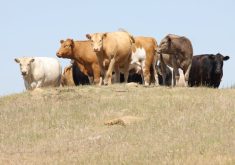Meat processor JBS expects to scramble in the next couple years to keep its Canadian slaughter numbers stable.
“We’re in an expansion phase (with the cow herd.) For my side of the business, the processing side, it’s going to mean less (slaughter) cattle,” JBS procurement chief Stirling Fox told the Livestock Markets Association of Canada annual meeting May 30.
“We’re going to be short some cattle for the next two to three years, no question. If more heifers say home, we’re going to feel the squeeze at the packing level.”
Read Also

Prairies have variable soil moisture conditions
The dry weather in the west was welcome for preserving grain quality and advancing harvest, but it has resulted in very dry soil moisture conditions.
That bodes well for the following years, Fox said, since it means a bigger herd down the road. Ranchers are hanging onto cows and retaining heifers.
However, market analyst Jerry Klassen believes the Canadian cow herd faces expansion challenges and those might make Fox’s hopes hard to achieve.
“In Canada I think it’s very difficult to expand the herd significantly,” said Klassen in a market outlook following Fox’s presentation. “I don’t think we’ll see significant expansion.”
Klassen said Canadian bred cow prices are high, putting them out of the reach for ranchers hoping to start a herd. The rancher population is aging and fewer are willing to retain animals for future production.
“Heifer retention will only come from producers that are still looking at being in the business for the next 10 years,” said Klassen.
At the same time the U.S. cow herd is expanding through heifer retention and lower cow slaughter. That means more calves this year and next.
“This will continue in 2016. Each quarter we will have larger beef production,” said Klassen.
“The next seven quarters we will see a year over year increase.”
Fox said he believes Canadian ranchers are also retaining heifers and shipping fewer cows, so he expects to see calf numbers increase over the next two years.
He doesn’t like statistics that show about 500,000 Canadian slaughter cattle went to the U.S. last year, but if those cattle stay home the outlook is more optimistic.
“There’s still half a million cattle leaving the country that we can utilize to run through our operations, us and Cargill,” said Fox about the JBS plant in Brooks, Alta., and Cargill in High River, Alta.
Since late 2014 he has focused on keeping slaughter animals in Canada, and “we’ve certainly slowed the flow.”
Most slaughter cattle recently shipped to the U.S. were previously contracted and were not fresh sales, he said.
Contact ed.white@producer.com
















